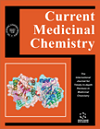
Full text loading...
We use cookies to track usage and preferences.I Understand

This study aimed to construct a diagnostic risk model for Bipolar Disorder (BD) using inflammation-related genes (IRGs) and to explore the role of immune cell infiltration in BD pathogenesis.
BD datasets (GSE23848, GSE124326, GSE39653, and GSE46449) were retrieved from the Gene Expression Omnibus (GEO) database. Differentially expressed genes (DEGs) were identified using the edgeR package. The intersection of DEGs and IRGs was defined as differentially expressed IRGs. A LASSO regression model was used to identify optimal biomarkers, which were then utilized to construct a diagnostic risk model. Receiver operating characteristic (ROC) curves were used to evaluate the diagnostic accuracy of the biomarkers. Internal validation was performed with GSE124326, while external validation utilized GSE23848, GSE39653, and GSE46449. The xCell module in the IOBR package was employed to assess immune cell infiltration proportions. The relationship between IRGs, the diagnostic risk model, and immune cell dynamics was further analyzed.
A total of 2345 DEGs were identified in GSE124326. Gene Ontology (GO) and Kyoto Encyclopedia of Genes and Genomes (KEGG) pathway enrichment analyses indicated that inflammatory pathways are critically involved in BD pathogenesis. A total of 69 BD-related IRGs were identified. Six key IRGs (IL33, DNASE1L3, IL2RA, CD70, CLEC5A, and SLPI) were identified through LASSO regression analysis and used to develop a diagnostic risk model. Internal and external validations confirmed the robust diagnostic performance of the risk model. Immuno-infiltration analysis showed significant differences in immune cell infiltration between BD patients and healthy controls. The diagnostic risk model and four potential biomarkers (DNASE1L3, IL2RA, CD70, and SLPI) showed strong correlations with various immune cell types.
A diagnostic risk model for BD was constructed based on IRGs, highlighting the critical role of immune cell infiltration in BD pathogenesis.

Article metrics loading...

Full text loading...
References


Data & Media loading...
Supplements